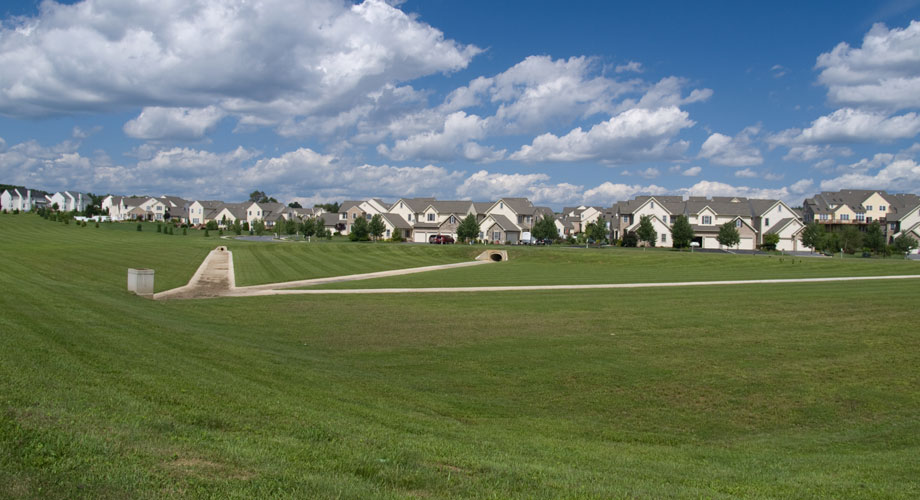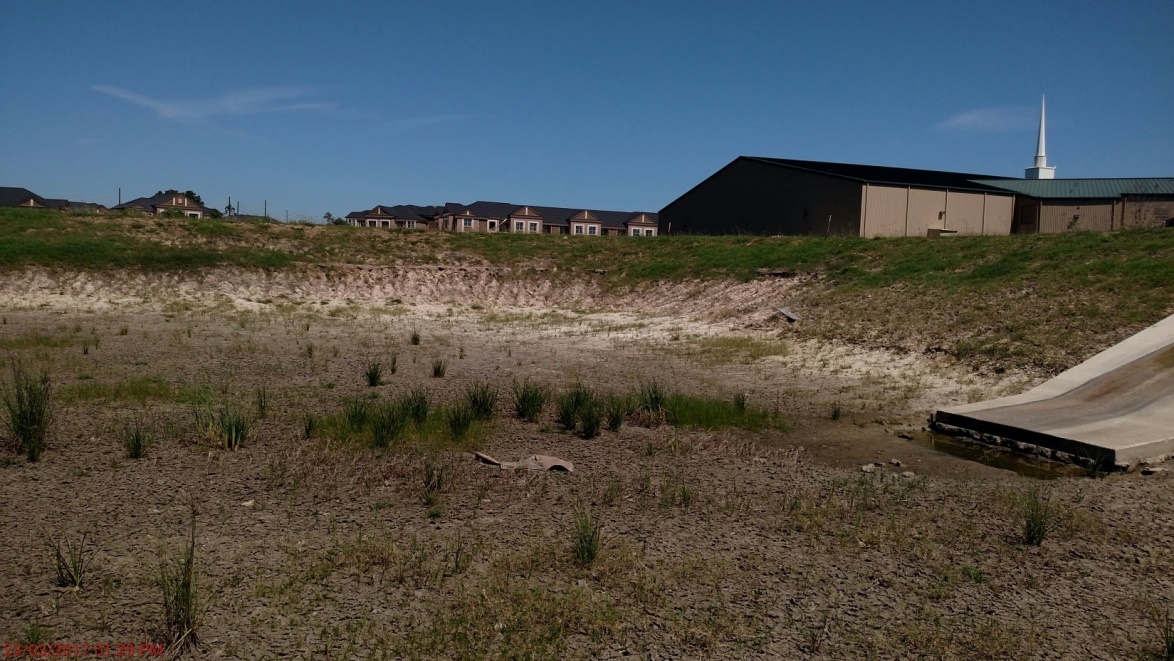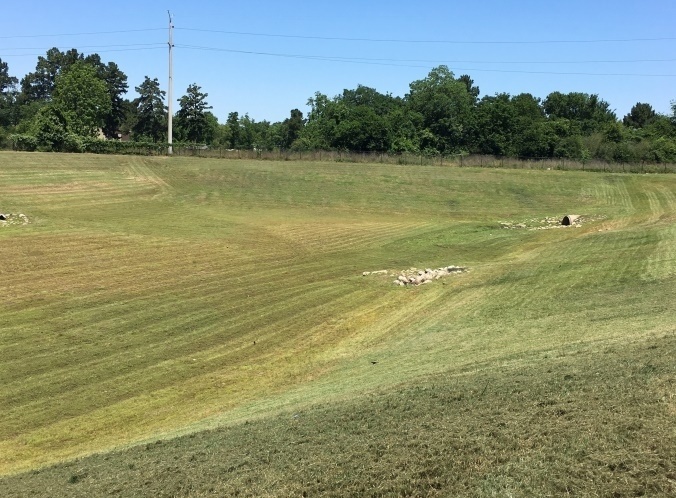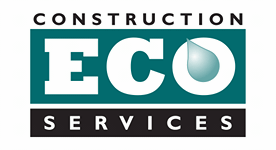Detention Ponds: Life After Construction
By now we should all know that vegetative stabilization during construction is a key step in a site’s infancy. But what do you do after the site is built, when the construction crews are gone, and now you (or your tenant) are using the property to conduct business? You guessed it…long term stabilization!

Pond upkeep is often one of the most overlooked aspects of a property’s maintenance routine, and yet, it is one of the most important. When neglected, a detention pond can cost thousands to repair or rehabilitate, and yet, when a regular routine is established, a maintenance program can be easily budgeted for.
Maintenance routines are fairly universal, regardless of the size or shape of the pond: monthly inspections and mowing, and semi-annual seeding and fertilizing. Some detention ponds have pilot channels, which require some additional steps (more on this in future blogs), and some detention ponds have storm water quality structures at the outfall, which have specific, unique maintenance requirements.
What all detention ponds have in common, and what is typically neglected is vegetation, and it is the key to sustaining the integrity of the pond. Without healthy vegetation, soil will erode, causing sometimes massive rills and sink holes. However, simply by fertilizing and seeding the slopes of the pond twice a year, those costly problems are easily avoided.

Another aspect of pond maintenance is mowing, and it too is vital to preventing major issues that require expensive and time-intensive repairs. In addition to mowing the slopes of the pond, it is important to mow the bottom of the basin as well, and prevent weeds and small trees from growing in the pond, degrading the integrity of the pond and ultimately requiring tedious removal of the overgrowth.

The key to staying on top of all of these things is monthly inspections, which are required by the local jurisdiction and specified in the property’s Stormwater Quality Management Plan. If your detention pond is in need of maintenance, contact us. We will do an on-site assessment and work with you to develop a maintenance program to fit your needs.











